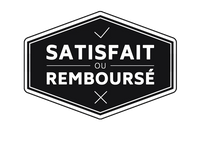Raoul Dufy was a French painter, draughtsman and decorator who was born in Le Havre in 1877 and died in Forcalquier in 1953. Initially trained at the École des Beaux-Arts in his native town, he went on to study in Paris, where he discovered the work of the Impressionists and, above all, that of
Claude Monet. It was his vision of Rouen Cathedral that marked a turning point in his career and led him to explore colour and light.
At the beginning of the twentieth ce...
Voir plus >
Raoul Dufy was a French painter, draughtsman and decorator who was born in Le Havre in 1877 and died in Forcalquier in 1953. Initially trained at the École des Beaux-Arts in his native town, he went on to study in Paris, where he discovered the work of the Impressionists and, above all, that of
Claude Monet. It was his vision of Rouen Cathedral that marked a turning point in his career and led him to explore colour and light.
At the beginning of the twentieth century, Dufy became enthusiastic about
Fauvism, particularly after seeing the works of
Matisse at the Salon des Indépendants in 1905. He adopted a bold, vivid palette, liberating colour from its realistic function and turning it into an expressive language. His rapid, almost musical brushstrokes and flat tints of colour were reminiscent of the energy of Fauvism, although he later developed a more personal style, combining linear drawing and bright colours.
Dufy's favourite subjects reflected his taste for joie de vivre and the spectacles of modernity. He painted seaside scenes, regattas, orchestras, horse races, flowers and bright interiors. Above all, he sought to convey a sensation, a rhythm, rather than a faithful representation of reality. His style became recognisable for its fluid contours, free perspectives and light, almost airy compositions.
Dufy worked alongside several major figures in modern art, including Georges Braque, with whom he shared a period of work based on
Cézanne cubism. He also worked with decorators, ceramists and fashion designers such as Paul Poiret, for whom he designed printed fabrics. His work in the decorative arts culminated in the monumental creation of La Fée Électricité in 1937, a fresco covering more than 600 m² commissioned for the Paris International Exhibition.
An unclassifiable artist, Dufy navigated between several movements without ever getting stuck in one:
fauvism,
cubism, decorative art. Above all, he remained a painter of light and visual pleasure, whose work celebrates colour, movement and the vitality of the world.
Voir moins


































